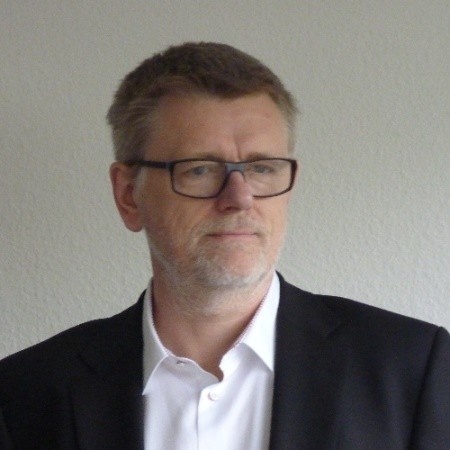High Security Connects with Health Wellbeing
The access control market is rapidly moving towards contactless technologies and solutions must be both uncomplicated and high-secure. GIT SECURITY has asked Vincent Dupart, STid’s CEO, and François Gitz, STid’s Sales Manager, how this demand forms the two fundamental pillars of STid’s expertise.



GIT SECURITY: Can you give us an update on the latest trends at STid?
Vincent Dupart: Our growth continues, our strategy is consolidated and our investments retained. This period is challenging for a lot of companies. Our investment in a robust IT infrastructure has allowed us to set up teleworking and maintain an optimal quality of service. Our eyes are locked onto the future and if you ask for our ambition, it is to continue on the path of innovation.
What changes do you see within the access control market?
François Gitz: The health situation is disrupting our lifestyle. Our daily life is now punctuated by this subject matter „Stay Safe“. Contactless technologies offer a real solution to this need for protection. STid‘s vision is to create products and solutions that grow with ever-changing security needs. We design and supply contactless identification products and solutions for Physical Security, Logical Access Control and Automatic Vehicle Identification. With STid, the smartphone, our greatest personal device, becomes the access control key thanks to its operational effectiveness, flexibility, efficient access, and intuitiveness.
What are STid‘s keys to success in the access control market?
Vincent Dupart: Our success is based on our ability to combine two paradoxical needs: the requirement for flawless security from Security Departments and the necessity for seamless user experience, by removing identification constraints. With STid, access control becomes instinctive and guarantees data protection. Our access control solutions are future-proofed and we are able to adapt to any customer needs evolution. Moreover, we promote open technologies. We guarantee organizations independence and full autonomous management of their security. This freedom is essential for STid: our customers are not locked into a solution or tied down by proprietary technologies. This bold positioning entices and retains our customers. Another STid strength is our capacity to offer uniformed end-to-end security. We ensure faultless end-to-end security between the card and the reader (with Mifare Desfire EV2/EV3 technologies), and between the reader and the controller/LPU with systems capable of supporting OSDP and SSCP (Secure & Smart Communication Protocol) protocols.
What are the strengths of the SSCP protocol?
Vincent Dupart: The SSCP Protocol is an architecture allowing integrity and confidentiality by the encryption of sensitive data. This protocol is supported by Smart Physical Access Control Association (S.P.A.C.). SSCP protects the communication of physical and digital access control equipment. The SSCP protocol provides uniformed protection for all your applications by protecting interface communications (RS485, USB, TCP/IP, etc.). This protocol guarantees the interoperability of all equipment through compliance certification. Why? To build trusted solutions and to provide genuine technological independence for more freedom and sustainability.
You mentioned S.P.A.C. Association. How will this Association help the security ecosystem?
Vincent Dupart: We have formed S.P.A.C. to help with security Industry 4.0 ecosystem in the choice and the creation of trusted solutions. Today, we have to seek a collaborative response to fight against cyberattacks and to secure the ever more varied entities that can be connected or not and to the French and European regulatory framework. S.P.A.C. will rely on the regulatory framework to support the ecosystem in the increase of the level of security within our solutions. But that’s not all! S.P.A.C. will rely on the certified CSPN standard SSCP protocol which permits interoperability of the equipment. It allows securing cable or wireless links for the use of connected objects and allows secure communications with additional equipment other than the reader, such as locks, doors, sensors, cameras and barriers.
most read

Machine & plant safety: The winners of category A at the GIT SECURITY AWARD 2026
GIT SECURITY AWARD 2026: Machine & plant safety - an overview of the most innovative solutions

When the Internet stumbles: Why DNS is important
When DNS fails, the internet stumbles-AWS outage proves resilience and redundancy are vital for digital trust

Assa Abloy's battery-powered Aperio KL100 secures lockers
Boost workplace security and operational flexibility by securing more than just doors.

Security management, building security & perimeter protection: the winners of category E at the GIT SECURITY AWARD 2026
GIT SECURITY AWARD 2026: Security management, building security & perimeter protection - an overview of the most innovative solutions









